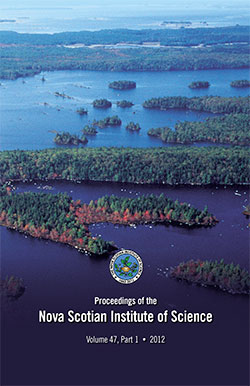TURBIDITY CURRENTS: A UNIQUE PART OF NOVA SCOTIA‘S AFRICAN GEOLOGICAL HERITAGE
DOI:
https://doi.org/10.15273/pnsis.v47i1.3381Abstract
Four hundred million years ago, when the supercontinent Pangea wastorn apart, a piece of the continental crust from material that is now part
of Africa broke off on the North American side. That piece of Africa
became southern Nova Scotia. The African rock was made of material
deposited by ancient turbidity currents. Created by submarine landslides,
turbidity currents still happen today. Whether evaluating these sedimentary
rocks for oil and gas deposits or for building a city, or studying the
possibility of future turbidity currents along the coast to be prepared for
a tsunami, turbidity currents are studied by scientists because they have
an impact on Nova Scotians.
Keywords: turbidite, turbidity current, Grand Banks earthquake,


